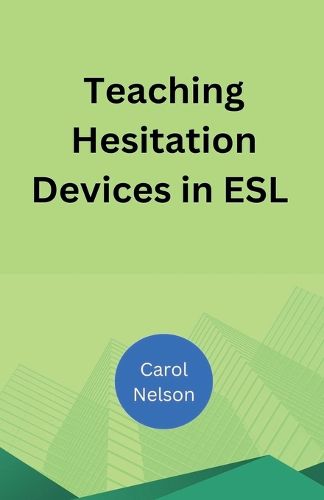Readings Newsletter
Become a Readings Member to make your shopping experience even easier.
Sign in or sign up for free!
You’re not far away from qualifying for FREE standard shipping within Australia
You’ve qualified for FREE standard shipping within Australia
The cart is loading…






This title is printed to order. This book may have been self-published. If so, we cannot guarantee the quality of the content. In the main most books will have gone through the editing process however some may not. We therefore suggest that you be aware of this before ordering this book. If in doubt check either the author or publisher’s details as we are unable to accept any returns unless they are faulty. Please contact us if you have any questions.
This book is designed to help low-level language learners develop their speaking fluency, with a particular focus on practical strategies that encourage smooth and confident communication. Through an exploration of key fluency strategies such as hesitation devices, lexical chunks, self-correction, and pauses, this resource equips students with the tools they need to navigate real-life conversations effortlessly. Drawing from both research and personal teaching experience, the book emphasizes the importance of raising learners' awareness about how language works in spontaneous speech and how they can use language patterns to sound more natural and fluent.
The book delves into essential concepts like formulaic language, which allows learners to internalize common phrases and sentence structures, and also covers the importance of self-repair, pauses, and articulation in creating coherent speech. By offering both practical exercises and reflective activities, the book encourages students to experiment with these strategies, build their speaking confidence, and gradually incorporate them into their daily language use.
In addition to providing valuable insight into how fluency develops, the book also highlights the psychological and cognitive aspects of speaking, including the role of time pressure, memory, and metacognitive strategies. With real-world examples, guided practice activities, and reflection opportunities, this book offers a comprehensive guide for both learners and teachers aiming to improve spoken fluency in a meaningful and engaging way.
Whether you're a teacher seeking effective strategies for your classroom or a learner looking to boost your speaking skills, this book provides a clear and structured approach to mastering spoken English with ease and confidence.
$9.00 standard shipping within Australia
FREE standard shipping within Australia for orders over $100.00
Express & International shipping calculated at checkout
This title is printed to order. This book may have been self-published. If so, we cannot guarantee the quality of the content. In the main most books will have gone through the editing process however some may not. We therefore suggest that you be aware of this before ordering this book. If in doubt check either the author or publisher’s details as we are unable to accept any returns unless they are faulty. Please contact us if you have any questions.
This book is designed to help low-level language learners develop their speaking fluency, with a particular focus on practical strategies that encourage smooth and confident communication. Through an exploration of key fluency strategies such as hesitation devices, lexical chunks, self-correction, and pauses, this resource equips students with the tools they need to navigate real-life conversations effortlessly. Drawing from both research and personal teaching experience, the book emphasizes the importance of raising learners' awareness about how language works in spontaneous speech and how they can use language patterns to sound more natural and fluent.
The book delves into essential concepts like formulaic language, which allows learners to internalize common phrases and sentence structures, and also covers the importance of self-repair, pauses, and articulation in creating coherent speech. By offering both practical exercises and reflective activities, the book encourages students to experiment with these strategies, build their speaking confidence, and gradually incorporate them into their daily language use.
In addition to providing valuable insight into how fluency develops, the book also highlights the psychological and cognitive aspects of speaking, including the role of time pressure, memory, and metacognitive strategies. With real-world examples, guided practice activities, and reflection opportunities, this book offers a comprehensive guide for both learners and teachers aiming to improve spoken fluency in a meaningful and engaging way.
Whether you're a teacher seeking effective strategies for your classroom or a learner looking to boost your speaking skills, this book provides a clear and structured approach to mastering spoken English with ease and confidence.